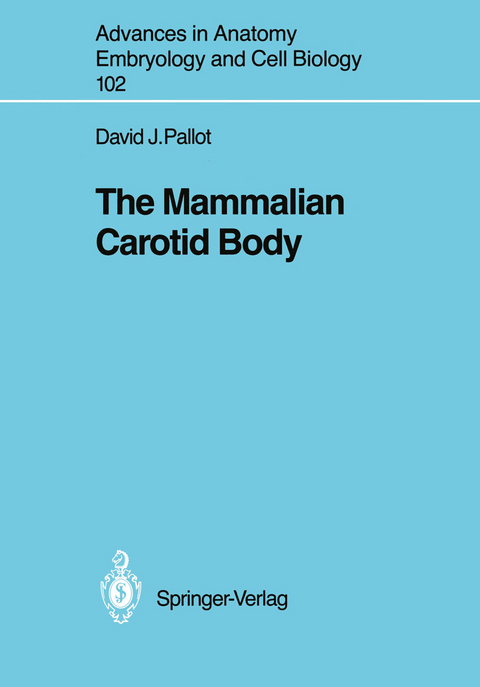The Mammalian Carotid Body
Springer Berlin (Verlag)
978-3-540-17480-6 (ISBN)
1 Introduction.- 2 Ultrastructure of the Carotid Body.- 2.1 Type I Cells.- 2.2 Sub-types of Type I Cells.- 2.3 Type II Cells.- 2.4 Ganglion Cells.- 2.5 Blood Vessels.- 3 Innervation of the Carotid Body.- 3.1 Ultrastructure of Nerve Endings.- 3.2 Clear-Cored Vesicles.- 3.3 Mitochondria.- 3.4 Electron Dense-Cored Vesicles.- 3.5 Glycogen Granules.- 3.6 Varieties of Type I Cell Endings.- 4 Catecholamines and the Carotid Body.- 4.1 Effects of Natural Stimulion Carotid Body Catecholamines.- 4.2 Synthesis of Catecholamines.- 4.3 Uptake and Metabolism of Catecholamines.- 4.4 Effects of Catecholamines on Carotid Body Activity.- 4.5 Sites of Action of Catecholamines.- 5 Carotid Body Pathology.- 5.1 The Human Carotid Body and Chronic Hypoxaemia.- 5.2 Chronic Hypoxaemia in Animals.- 5.3 Carotid Body Hyperplasia in Systemic Hypertension.- 5.4 Chemodectomas.- 5.5 The Carotid Body and Cot Death.- 6 Identity of the Chemosensor.- 6.1 The Type I Cell.- 6.2 Studies of Neuromas.- 7 Conclusion.- Acknowledgments.- References.
| Erscheint lt. Verlag | 16.4.1987 |
|---|---|
| Reihe/Serie | Advances in Anatomy, Embryology and Cell Biology |
| Zusatzinfo | VI, 94 p. 19 illus. |
| Verlagsort | Berlin |
| Sprache | englisch |
| Maße | 170 x 244 mm |
| Gewicht | 230 g |
| Themenwelt | Studium ► 1. Studienabschnitt (Vorklinik) ► Anatomie / Neuroanatomie |
| Naturwissenschaften ► Biologie ► Zoologie | |
| Schlagworte | Cell • Metabolism • nervous system • Pathology |
| ISBN-10 | 3-540-17480-X / 354017480X |
| ISBN-13 | 978-3-540-17480-6 / 9783540174806 |
| Zustand | Neuware |
| Haben Sie eine Frage zum Produkt? |
aus dem Bereich




